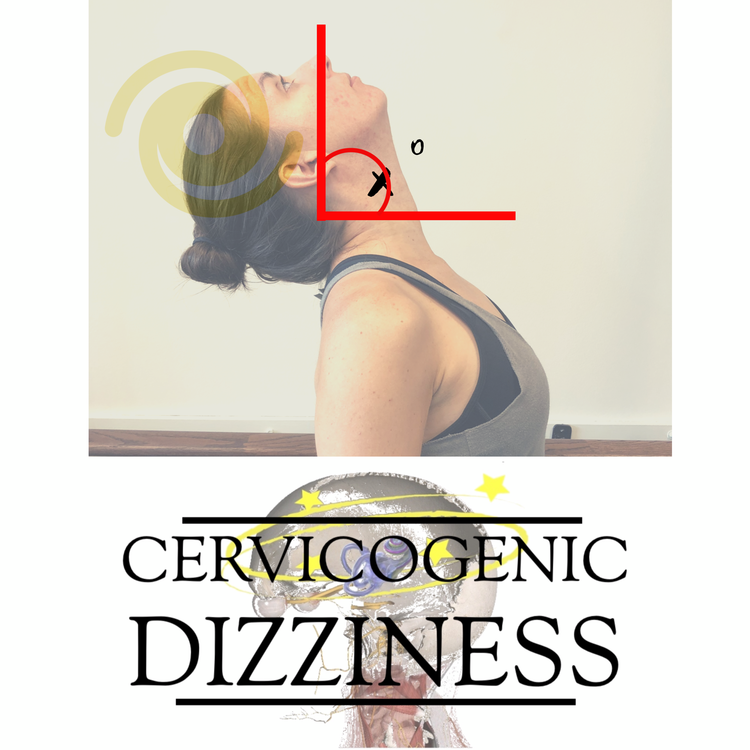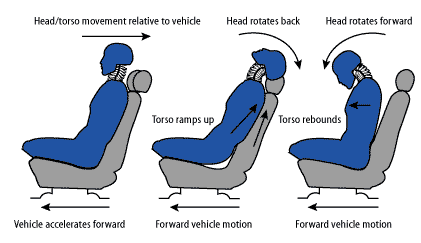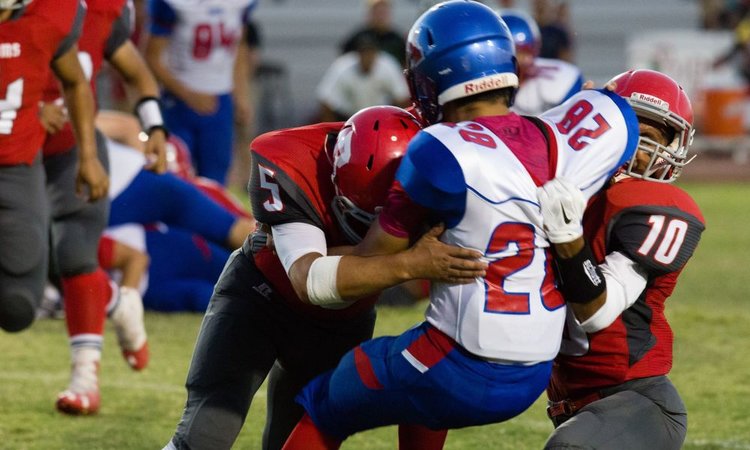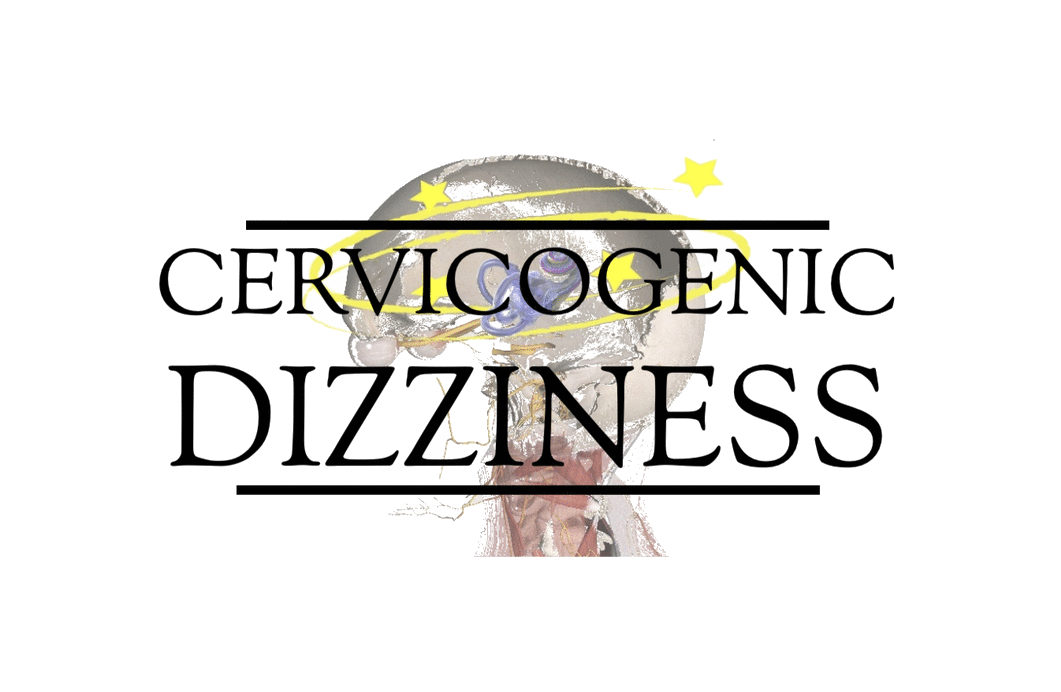
Can you get a concussion from impact to the chest?
Typically when someone thinks of a concussion, a picture below comes to mind.

But, we also know sport-related concussion is just one type of injury that is associated with the diagnosis of concussion, or mTBI. Prior to the recent build-up of information and data on concussion in sport over the last several years, we would treat similar symptoms in patients presenting with whiplash-associated disorders.
So, for those us treating whiplash, this type of image usually comes to mind.

One impact approach that typically doesn't come to mind, but could potentially be more prevalent (although may require twice the rotational velocity) in contact sports (especially with changes in tackling rules) is the biomechanical response to the cervical spine from primary impact to the chest.
Potentially a picture like the one below can come to mind.

Instead of just helmet-to-helmet collisions, we can't forget impulsive force transmitted to the head from a direct blow somewhere else. This is in the definition from the 2012 consensus statement and considering the acceleration strain placed on the head and neck with this type of impact, we don't want to forget this mechanism and potentially rehabilitation methods with this type of contact.
A recent study by Jadischke R et al in 2018 examined the biomechanical response and strain of the upper cervical spine and brainstem from chest impact in their study entitled, "Concussion with primary impact to the chest and the potential role of neck tension".
Even though chest impact collisions causing concussion place lower stress on the neck, the authors did find that neck tension or strain along the axis of the upper cervical spine cord and brainstem is a possible mechanism of brain injury in concussion.

Don't always imply a neck injury results in a brain injury, but also don't imply lack of direct head collision means less stress to the cervical spine to not impact the soft tissues and joints that could be potential drivers of nocioceptive and proprioceptive dysfunction. You may just be missing a key component in manual and/or sensorimotor rehabilitation to get maximal results in your patients.
Cervicogenic Dizziness Course
You can learn more about the screening and treatment process of Cervicogenic Dizzinesss through Integrative Clinical Concepts, where the authors (husband–a manual therapist a wife—a vestibular specialist), teach a very unique course combining both the theory and practice of vestibular and manual principles in their 2-day course. Pertinent to this blog post, the 2nd day includes the “Physio Blend”, a multi-faceted physiotherapist approach to the management of Cervicogenic Dizziness, which includes treatments of the articular and non-articular system of manual therapy and the most updated sensorimotor exercise regimen.
If you would like to host a course for your staff (either a vestibular, neuro, sports or ortho clinic), please do not hesitate to contact me at harrisonvaughanpt@gmail.com for more information.
AUTHORS
Harrison N. Vaughan, PT, DPT, OCS, Dip. Osteopracic, FAAOMPT
Instructor: Cervicogenic Dizziness for Integrative Clinical Concepts
Danielle N. Vaughan, PT, DPT, Vestibular Specialist
Instructor: Cervicogenic Dizziness for Integrative Clinical Concepts



